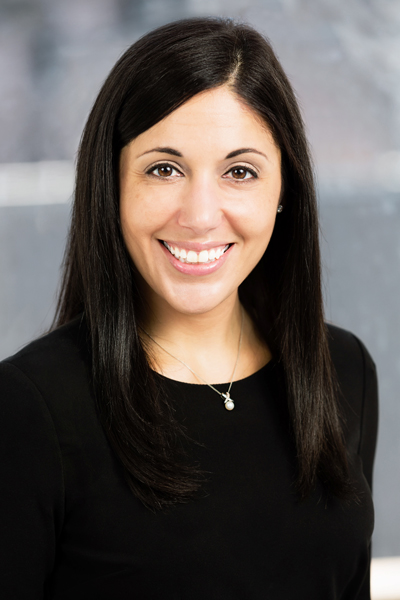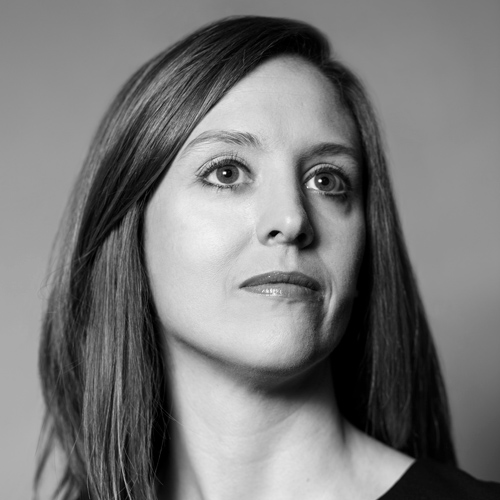
Despite the breakthroughs and innovations that social media has produced, nothing compares to real interactions with real people.
That’s the philosophy behind UBM plc, a global business-to-business event organizer and one of the largest event producers in the United States. While UBM has celebrated tremendous growth and international presence, the UBM Americas division still needed a centralized finance organization to drive consistency among its US businesses and provide a consolidated overview of the division’s financials.
So UBM—which has events that span several industries, including fashion, technology, life sciences, advanced manufacturing, and licensing—brought in Andrea Vardaro, a proven leader and change agent experienced in legal services, consumer products, and tech start-up industries. “There was a lot of opportunity for me not only to learn the events business, but also to understand the connections across industry sectors and how trends in each of the industries we serve impact our business decisions and, ultimately, our financials,” says Vardaro, vice president of finance for UBM Americas.
To start with such a major undertaking, Vardaro created a plan to implement a more effective and efficient divisional finance function. First, she sought to address where processes were going well and where they could be improved. “I like to take the approach of, ‘don’t just dive in, but understand the impacts end to end,’” she explains.
Once Vardaro was up to speed, she solicited feedback from her team to identify any operational issues and opportunities for improvements. From there, she collaborated with the team in brainstorming solutions and best practice recommendations.
Vardaro emphasizes the importance of collaboration because when team members see that they can influence the process and their voices are being heard, then they’re more apt to implement ideas and be comfortable with change initiatives. She adds that fostering an open dialogue and encouraging team members to share their ideas is a key ingredient to more effective end-to-end problem-solving.
Finally, Vardaro and her team developed a road map, assigning ownership along the way to hold individuals accountable for execution of key project milestones. Throughout the process, Vardaro’s team continued to evaluate how successful their efforts were and course corrected when needed. This model helps Vardaro break down major projects into realistic tasks and then prioritize them accordingly.
“I enjoy being able to implement new ideas to drive necessary change. Seeing the outputs of what I’ve implemented and all the efforts that were put in to achieve success is most rewarding,” she says.
Vardaro’s expertise in implementing corporate-wide change wasn’t acquired overnight. It was the result of a career extending across multiple industries, from a junior auditing role to heading the finance department of a multimillion dollar company. Along the way, each role and company taught her valuable lessons she carries with her to this day.
During her tenure at LeBoeuf, Lamb, Greene & MacRae, Vardaro had the opportunity to travel internationally and work with individuals in various office locations around the world in a hybrid consulting and auditing role. The position not only shed more light on how finance and accounting processes work in influencing business, but also provided Vardaro with a more robust view of varying cultures distinct from the United States.
Seeking a new challenge, Vardaro joined Revlon and the consumer products industry. There, she ascended from an internal auditor role to vice president of US finance, in just eight years. That divisional finance role was the opportunity Vardaro had been seeking—to work directly with the business and use her extensive operational finance experience to drive decision-making. At Revlon, Vardaro was part of a team that implemented an integrated business planning (IBP) process in the US business.
“The IBP process looked at the business starting from end to end, starting at the supply chain through to the financial forecast,” she says. “Individuals at every level in each department were involved in that process so everyone contributed to the business decisions and outcomes. This was a great example of a cross-functional team working together collaboratively to drive strategy.”
Using her expertise to drive change again, Vardaro joined a tech start-up that wanted to go public. However, the company needed a more structured finance organization to function as a public company. “We started with building a team with the right mix of experience, then implemented the necessary processes and controls,” she explains.
Implementation was a challenge because some saw the finance function as bureaucratic. But Vardaro found that the entire organization was curious to learn. She established roles and timelines, built an adequate internal control environment, and ensured the reported financials were in line with US GAAP. “Everybody seemed to embrace learning process, and they were open to change,” she says.
Vardaro’s experience in driving corporate change helped substantially for her role at UBM. Vardaro has much to be proud of since she joined UBM two years ago. The UBM Americas division now has a central function, composed of a team with an FP&A function, and a reporting function. Vardaro emphasized the importance of educating the cross-functional teams on the role of finance and how data and analytics finance can drive more informed decisions. “Finance should not only have a seat at the table, but it should also be an integral player in the decision-making process,” she says.
The next phase of UBM’s transformation journey is already underway. One initiative Vardaro is spearheading is a shift from traditional forecasting and budgeting to a rolling forecast model and zero-based budgeting. She also hopes to incorporate a similar integrated business planning process tailored specially for the UBM business.
“The goal is to enhance visibility into the financials and to provide a more realistic, forward-looking outlook to management so they have the tools they need to make more informed and timelier business decisions,” Vardaro says.
UBM continues to grow through driving its events-first strategy, which includes new acquisitions and maintaining a balanced portfolio managed for profitability and growth. And with help from Vardaro, the key is to adapt to constantly changing industry sectors—an environment that is well-suited for someone who thrives in change.
“When you think about UBM’s business, it’s helping our customers succeed through the power of collective, human interactions that ignite trade, knowledge, and networks,” Vardaro says. “I don’t think that’s going to go away, so it’s important that we respond to growth opportunities and new trends.”
Photo: Brett Deutsch Photography

